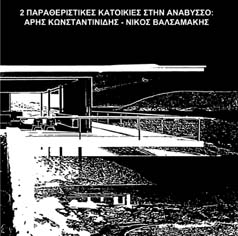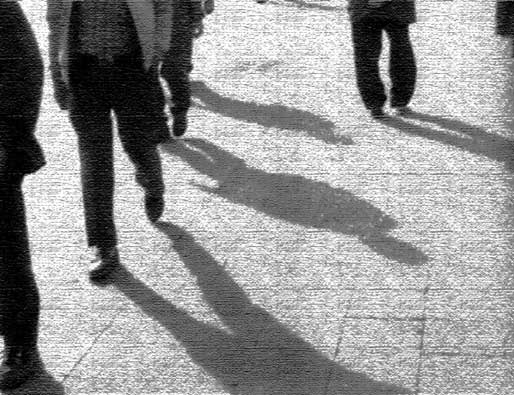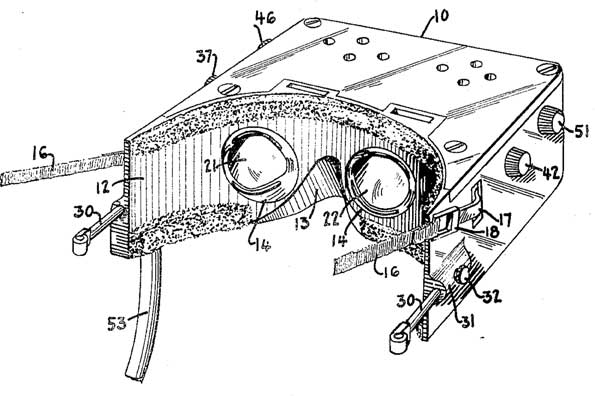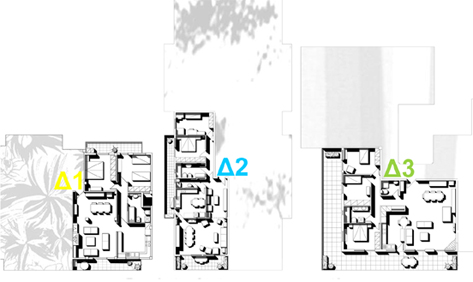

At the '60, afterwards from the war, the Greek architecture presents a renewal. In this renewal contributed also the growth of thearchitectural detached house in the natural landscape. The ' 60 detached houses were influenced by the modern architecture and the western way of life but simultaneously retain elements of Greek delivery. Important representatives of this architecture are architects Aris Konstantinidis and Nikos Valsamakis. Their two residences in the Anavyssos constitute two of the most famous samples of this architecture.
Aris Konstantinidis was born in Athens at 1913 and studied architecture in the Munich of Germany. There came in contact with the opinions of modern movement but then he travel and study in the Greek space and his architecture. He fight with passion for a modern genuine architecture that comes from the needs of place. His architectural work is characterized by their simple and visible constructional structure, the rational provision of ground plan, the functionalism of spaces, the original combination of constructional materials and their integration in the natural environment. The basic influences in the work of Aris Konstantinidis emanate from the Modern Movement and the anonymous Greek architecture. Aris Konstantinidisrevealed his personal opinions for architectural in the books he writes also his interviews in various magazines. The elements of organisation of Aris Konstantinidi’s houses is the placement of the building in the landscape so as to are found in some harmony with the natural environment, the visible segregation of elements that they bring from the elements that separate at construction, the frugal form, housing spaces and the use of colours and materials with way that would connect the architectural work with his natural environment.
Nikos Valsamakis was born in 1924 and he study at the Architectural Faculty of National Techical university From Metsovo up to that have to interrupts his study because the war. Characteristic of work of N. Valsamaki’s existed always the simplicity of forms and the cleanliness of his planning. In his work is maintained a common plan frame of abstraction and austerity. The architecture of N. Valsamaki’s is moved between a internationalism of western origin and in the search of domestic identity. Nikos Valsamakis seldom gave interviews and expressed in public his personal opinions for the architecture. The elements of organisation of Nikos Valsamaki’s houses is the manufacture of advanced technology where she differentiates the elements that they bring from the elements that separate, the free compositions horizontal and vertical elements in forms buildings, the composition of rectangles of spaces and the use of the most been famous materials of modernism.
The residence of Aris Konstantinidi’s house in Anavyssos, made as house of interruptions at 1962. Is found near the sea, in a small rocky cape, that meets no one in her coastal way avenue Athens-Sounio. The building is small and his form rectangle. Today is in a big plot that contains a villa of shipowners and a big garden. It is used as permanent house for the guardians of villa and no as house of interruptions. The way of living today is different from the one that Aris Konstantinidiswished.
The residence of Nikos Valsamaki’s hoyse in the Ana'vysso, made for aestival stay of four person family at 1963. Finds in the higher point hill above the central road Athens - Sounio. The manufacture of residence follows the models of western architecture. It is fixed by two plates of armed concrete and between their big surfaces of glass and minimal walls. The building is big with many housingspaces. Today the residence uses as old for seasonal residence. However the picture today has been differentiated by the one that is presented in photographs.
The model of residence of Konstantinidi’s corresponds in a solitary way of life. It wishes it creates in this a Greek way of life according to him, equivalent with this the old Athenian houses. Nikos Valsamakis tries it transports in his this residence the international way of life. Influenced from the American residences of modernism it creates also this proportional model of residence.
Aris Konstantinidis revealed always his thoughts and in this way supported also his built work. It tried it proves via the reason who it is the deeper substance of his architecture. Nikos Valsamakis supported his built work photographing him and presenting his better and impressive optics. First one tries to impresses with the words and second with the picture.
Supervisor: Giannisi Phoebe
Reference Number: 131


The Virtual etymologically, as the sociologist Bruno Latour refers to, is what was many properties and characteristics and waits to take shape. The Virtual does not only depict reality, but it uses it as raw material. The concept of virtual was always existed in the boundaries of reality.
Alpha World – Active worlds
Until 1998 the avatar field had known a great scale development. The exact user number until September 7 2005 was 357.578. The launch of Alpha world , that became Active Worlds today marked a phenomenal development in virtual architecture.
The Active Worlds browser is a software that allows users to visit the Active Worlds virtual environments. The interface is divided in to basic parts. The first part shows the virtual environment and the other part shows the website of the specific virtual world.
At the lower part of the left side one can see the chat space.At the upper part there are the toolbars and navigation bars, for the avatar movement and the cameras that the users sees. The right part functions exactly like a conventional browser, with the default navigation bar above the website space. The users are divided in two categories, the tourists and the citizens.
The tourist avatars are different from world to world, but all tourists share the same avatar that can only have a different gender. The avatar shape usually has to do with the theme of the virtual world that is visited at the time. Active World citizens can choose from a list of avatars that are provided by the program. In the Active Worlds that building is permitted, users can create their own constructions. Because of the form of these worlds, one can customize internally and externally his spaces. All these constructions are created from scratch without limitations. The various buildings and constructions are in relative between them distances, like in the real world. The total result of those constructions creates the image of a city. This city began its development in the shape of a star. This happened because it was easier for users to remember where they started building their houses by having to remember less numbers for the coordinates. So they started building on the 4 axes and on the bisections that have the same coordinate numbers ( ex. 42,42 , 135,135 )
Users can move their avatars by using the arrows or their mouse. To double the avatar’s speedone can press Control (Ctrl). Every Active World has its own movement repertoire that helps to move and communicate taking into account the needs of the specific world. Movement vary from dancing to swimming.
Beside that can of movement there is also Teleport.
Moove
Moove on line is an online community that allows users to interact in a virtual three dimentional space. The common starting point for all users is the application homepage that loads automatically once the user has downloaded the software, that is required for moove, to his computer and the basic house rooms that are included in the software to provide a start for each user. The interface functions as a browser adapted to the virtual world needs : Back, Community, Room, Actor, Help.
The basic menu that can be seen on the top has to do with some technical details about the application, with the options: File, Edit, View, Go, Help
In moove connection between the different rooms of a house is achieved with “doors”, which can be placed on room walls. These doors create a false sense of relative space. Doors form room to room can be moved, added or removed at will. They may have the shape of a regular door, but they function more like hyperlinks than spatial doors.
When there are more than one users in the same house they can communicate without having to be in the same room. In the chat space everything said by the users is displayed, unless the house owner turns of the intercom function. File can be dragged in the 3d space and are displayed as small cubes. The receiver of these files can download them by clicking on them and confirming that he wants to download the file. Every user can create his own avatar in the application’s Actor Studio.
After the body and gender choices are made, one can choose from a variety of characteristics through many categories.
Users can also create a range of avatars to suit their needs of every occasion and environment. There is not the possibility of an external view of the house, except when using the zoom out tool and the camera exits the room’s space. Then one can see a dark shape, because this applications has not been designed for external views
Active Worlds – Moove on line
Those two cases of virtual communities share a great deal, but also have many different aspects, that give each one of them a different character. In the Active World case avatars have specific forms and don’t allow users to customize and achieve a better expression of the users identity and representation through their avatar. In moove the possibilities that are provided to the users for the customization of their avatars are much greater. Unlike Active worlds, here one can shape his avatar by choosing many different details of its appearance, instead of being forced to choose from a short list of ready made avatars, that may not express him at all.
The attention given to space is also different. Moove gives priority to internal spaces, disregarding relative positions even between the rooms of the same house. Eventually the final image resembles the internet structure, with many different web pages – rooms, that are interconnected with hyperlinks – doors. On the contrary, in Active Worlds attention is being paid to the creation of wholes, comprised of various user constructions, that as a result create a greater whole – universe of worlds – planets.
These two applications despite the functional and design differences have something very important in common, that puts them in the same category, user interaction and their virtual presence in the same space. This presence gives an impression that resembles more to a real coexistence in the same space from the moment that spatiality is inserted as a notion.
Supervisor: Papakonstantinou Giorgos
Reference Number: 105


The study, named <<9 Industrial buildings _ 9 regained spaces. Tendencies at the protection of industrial heritage in Greece>>, started at the beginning of 2005 and had as an aim to distinguish, the tendencies that appear today at the restoration and re-use of industrial buildings in our country.
The study consists of six chapters.
The first chapter examines the content of the industrial heritage, while in the second a broad historical review is made at the pre-industrial and industrial period together with the factors decisive for the industrial development.
The conditions for the development of the industry in the new Greek state in the middle of the 19th century and onwards, as well as in the Greek areas which where under Turkish domination at the time, and the legislation, favorable for the Christian communities, which helped to the industrialization of certain areas are presented in the third chapter. In the same chapter, a reference to the architecture of the industrial buildings is also made in brief.
The fourth chapter presents the international principles for the protection of industrial heritage. It starts with a short historical review on the scientific interest in the industrial archeology and continues with the relevant interest in Greece. Finally, it presents the "Charter of Moscow", as to be used as a methodological tool for the analysis and the comments on the tendencies observed at the restoration and
re-use of the industrial monuments in Greece.
In the fifth chapter 9 examples of industrial buildings in Greece conserved and re-used are analyzed. Some historical elements about the town, where the building is situated, brief historical information about the building itself and a description of its architecture and construction, as well as the works for its restoration and re-use are presented for each example. In the end, an effort is made to analyze and comment the interventions applied.
The last chapter deals with some conclusions on the tendencies at the restoration and re-use of industrial heritage in Greece. Apart from the nine examples presented, reference is made to many more alike examples of restored and re-used buildings in Greece, with a variety of choices in the new uses and the general approach, so as to acquire a more representative and more precise image of the tendencies of today.
Supervisor: Theologidou Cleopatra
Reference Number: 112


The city, as an expression of a general social procedure in space, cannot just be considered as a sequence of objects placed in it according to a certain design, but it constitutes a functional “totality” in which every single part (of it) is related to all the others. It is not only the buildings or the natural environment, but also a gathering of people who live and take action together, under certain laws and rules, under common values and merits. It is a “workshop of culture and civilization”.
Every city has to create the appropriate living conditions but, at the same time, the financial, political, cultural, social and esthetic ones, so that the everyday life and action of the man as well as the social will be promoted.
An essential element of a city, so that the above goals will be succeeded, are undoubtedly, the free open places, “….cities of every time foresee open spaces, where social gatherings will be promoted and will serve the conducting of public relations”. A place like that is the square which constitutes the microcosm of urban life. It is indissolubly connected to the present and the past of a city and constitutes the canvass, on which the political and social change and, in general, the public life and action are painted.
The present project has the goal to study the “square” as an organic part of the city, historically originated, and, additionally, as a matter of designing which is faced as a new place into the already formed urban web and reveal those basic elements of design, of functionality, of sociality, of aesthetism, of symbol, as well as of perception, which compose it. An attempt to find 9designing scenarios-tools and, then, the reading under certain suggestions of ideas of each group of architectures participated in competitions about squares: 1) “Aristotelous Square” in Salonica and in particular participations of the competition of 1997 2) “Syntagma Square” 3) “Omonoia Square” and 4) “Monastiraki Square” in Athens and specifically participations of the competition of July-August 1998 which was open to all the European architectures.
The research of the suggestions of the architectural competitions was conducted objectively, neglecting the sayings, the views-expectations and the goals not only of the researchers but also of the sponsors. Consequently, the finding of architectural principles in each suggestion of architectural competition contributes to the better reading and comprehension of the place. Every suggestion hides inside a designing tool which, in most cases, is not evident. Most of the times, it hides a combination of designing scenarios. It is easily understandable if someone takes into consideration the fact that, apart from all the other uses that take place in the square, the use of trade (organized or not) is almost present in all cases. Indeed, in some cases, someone can read designing tools different from those of the researcher. Moreover, regardless of what the researchers say, there are models of organization that are formulated with variations. Every scenario mentioned has a specific history, is specifically dated and has specific characteristics. Every suggestion, which belongs to that category, “carries” all these elements. However, the insertion of new elements and ideas, the different approach of each researcher, the needs created in time, formulates a variation of the primary designing tool. The citizen of today will not be able to suppress their everyday life to designs that would not be straightforwardly associated to the real needs and functional utility. The existence of variations of the primary designing scenario, sometimes, results in not being evident and comprehensible from the beginning.
Every suggestion hides elements that we should take advantage of, and not be left at the level of suggestions and competitions. Unfortunately, all the suggestions are noticed to be maintained at the level of ideas and competitions, with very little practice, despite the fact that a lot of Greeks think hard between the maintenance and the modernization of the historically and topographically peculiar greek square.
Supervisor: Trova Vasso
Reference Number: 117


The term "synaesthesia" derives fromsyn- (< Greeksun "together") + stem of Greekaisthesis "sensation," declaring a pollution of the five senses in the sense of the perceptible. More simply it shows the situation in which an acoustic, olfactory, optical or tactile stimulus becomes perceptible as two separate but coexisting sensory incidents. Neurologist Richard Kitovits exalts the phenomenon of synaesthesia to the limbic system. The limbic system participates with the hypothalamus, regions of the right hemisphere and certain other regions of the brain in the sentiments and emotions. While synaesthesia for certain individuals that do not wish of all this sensory overload comprises a small wound, it stimulates the creative ones. Vassily Kandinsky was the artist that dealt, perhaps more from all the others, with synaesthesia, this ‘traffic jam’ of the senses.
Someone can cause synaesthesia with the use of hallucinogens narcotics, like LSD and Mescaline, since they intensify the nervous contacts between the senses.Programming companies that are not engaged in whether their workers make use of psychedelic substances, have some of the most advanced programs and are first in the experimentations of virtual reality. If those that gave birth to virtual reality invoked artificial synaesthesia then it seems reasonable that in virtual reality exist flecks of this experience and indeed in manageable form. John Waterworth, professor in information technology, calls computer systems "synaesthetic media"since they first function as aesthetic converters while people interact with them. Canadian writer McLuhan presents synaesthesia as a cultural ideal – a natural situation from whose bosom alphabetic literacy separated us, and a likely future state to which electronic media might be capable of returning us. What appears that multimedia are doing is to require a participative element, which constitutes a simultaneous interaction from many, if not, all the senses, thus creating a ‘temporary’ synaesthesia. Synaesthetic media already exist. They allow us to select the sense forms via which information becomes perceptible, with a proportional way as the one in which human synaesthesia changes how the senses become perceptible.
Supervisor: Psychoulis Alexandros
Reference Number: 125


The subject of the present lecture is the sociological dimension of certain Athenian blocks of flats. The interest is focused on the nutshell of the said blocks as frames of lives of their residents, rather than on the buildings morphological and architectural elements.
The research was centered in three paradigms of such blocks, all of which are representative of the Athenian structured space and are designed by anonymous architects. The research was realized through the use of three successive approaches. The first approach concerns all the blocks, the design of each of them was printed, whilst its inhabitants were interviewed. Through the said approach it was attempted to investigate the effect of the "produced qualities" in both the intra-communication and the lives of the residents.
Through this approach it was aimed to realize the contradictory results of the collective way of life, the intense need to (despite the neighbors presence) reinforce the residents privacy within their flats, as well as the facts) indicating the way and the degree of the inhabitants customization of the blocks spaces.
The next approach, whilst taking into consideration the observations made on the first, was focused in a single apartment of each block. In each such apartment there was photographical imprintment of specific material objects and spaces. The photographs were later studied so as to realize the characteristic elements of the internal space of each flat, in addition to the relation between the residents and their material object. This second approach sought to determine the relation between the individual personality of each inhabitant and the special character of his flat.
In the third approach, while still using the chosen flats, the research turned to the blocks as whole entities through the examination of their informal communication networks. To this extent it was attempted to record the information of senses (hearing, smell, vision) arising from all the residents, so as to create a realistic experience of residing in the chosen flats, whilst relating the communication networks with the inhabitants degree of privacy.
All the three approaches focused on observations of everyday life in the said apartments, such as the places where furniture’s were situated, as well as sounds (speeches, voices, sounds of music and television) and smells produced (by food, bubble-baths and perfumes), small and big scale of objects (furniture’s, decorative, books, waste). All these observations, though not actually given any conscious thought to by residents, were appraised in order to produce conclusions of their way of life and everyday routine.
Supervisor: Kotionis Zissis
Reference Number: 106


Medical health buildings evaluation is the resultant of the evaluation of psychiatric thought and social evolution.
The concept of psychiatric asylums starts in the 17th century in England with the establishment of a general hospital and takes the form of today through the work of Tuke, Franco Basaglia and Freud.
A lot of research has taken place on the behavior and the needs of mentally ill people and the impact of the changing, through centuries, urban environments.
In the beginning mentally ill patients are treated like animals and in the course of time and medical evaluation these patients start to be treated like human beings with special needs.
With the upgrading in medicine and the recognition of psychiatry and psychoanalysis as branches of medicinal Science, we have the upgrading in the functionalism and construction of psychiatric asylums.
Issues like the size of clinics, their physical setting and the needs of these patients for human spatial behavior, security and humanistic approach, start playing an important role.
Aesthetics, through decoration, color, together with functionalism, spark off substantial changes in the planning and housing system and physical settings become part of the treatment.
Together with the humanistic approach of the problem, planning and construction principles, which would relegate to the effort for proper medical health buildings, are given shortly in this project. The main principle was to have buildings that would not resemble in the least to the asylums of the past.
In General Hospitals, mentally ill patients are given the necessary medication but housing in institutional buildings “houses” provides both: medication and a more relaxed and friendly environment.
In Greece mentally ill patients are hospitalized in Psychiatric Hospitals, general hospitals, mental Health Institutions or are offered the services of special community services.
Trying to carry out my research I was given permission to the psychiatric clinics in General Hospitals in Thessalonica. Consequently I decided to transfer the field of my research to a place with a very sensitive group of population. Schools. I worked with young students 12-13 years old. Through their project and the contact I had with their teachers I had the chance to experience the work carried out by Κ.Δ.Α.Υ(Diagnostic, Valuation, Supportive Centers) for young students with learning difficulties and problematic behavior. Planning, size and physical setting, become a matter of crucial importance, when these special patients are young children.
Supervisor: Giannisi Phoebe
Reference Number: 147

